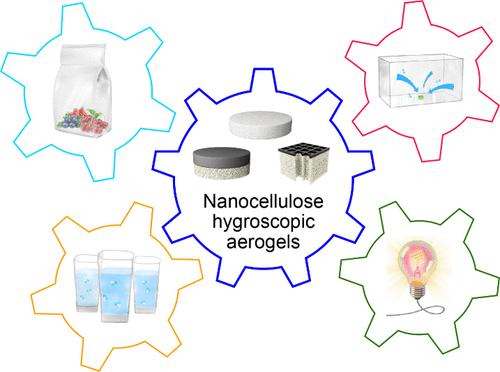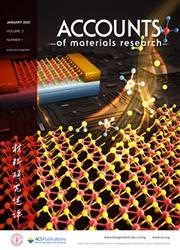Nanocellulose Building Block for the Construction of Hygroscopic Aerogels
IF 14
Q1 CHEMISTRY, MULTIDISCIPLINARY
引用次数: 0
Abstract
Moisture, a ubiquitous component in the atmosphere, offers a wealth of opportunities and presents various challenges in our daily lives and the surrounding environment. On the one hand, people can obtain clean drinking water from air and use the moisture to create new energy sources. On the other hand, many people across the world still face long-term drought or damp hazards caused by extremely low or high humidity. Therefore, the sustainable management of atmospheric moisture is crucial for creating a comfortable lifestyle for humanity. Cooling condensation and desiccant drying are established methods for adjusting atmospheric humidity, yet they still face a range of challenges including energy usage, efficiency levels, operational simplicity, and broad applicability. Recently, hygroscopic materials, which can regulate environmental humidity, material performance, and collect water by adsorbing moisture from air and managing the adsorbed moisture, are attracting increasing attention. For the efficient and scalable production of hygroscopic materials, it is fundamental to carefully select and ingeniously assemble the building blocks that dictate their performance.

构建吸湿气凝胶的纳米纤维素构件
水汽是大气中无处不在的成分,它为我们的日常生活和周围环境提供了大量机遇,也带来了各种挑战。一方面,人们可以从空气中获取清洁的饮用水,并利用水汽创造新能源。另一方面,世界上仍有许多人面临着因湿度极低或极高而造成的长期干旱或潮湿危害。因此,大气湿度的可持续管理对于为人类创造舒适的生活方式至关重要。冷却冷凝和干燥剂干燥是调节大气湿度的成熟方法,但它们仍然面临着一系列挑战,包括能源使用、效率水平、操作简便性和广泛适用性。近来,能够调节环境湿度、材料性能,并通过吸附空气中的水分和管理吸附的水分来收集水分的吸湿材料越来越受到关注。要想高效、规模化地生产吸湿材料,最根本的是要精心挑选和巧妙组装决定其性能的构件。
本文章由计算机程序翻译,如有差异,请以英文原文为准。
求助全文
约1分钟内获得全文
求助全文

 求助内容:
求助内容: 应助结果提醒方式:
应助结果提醒方式:


